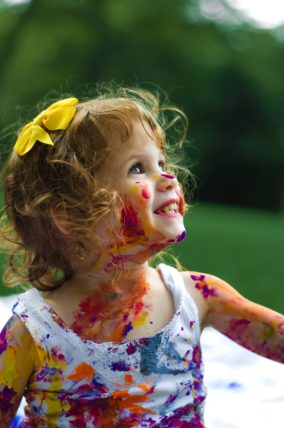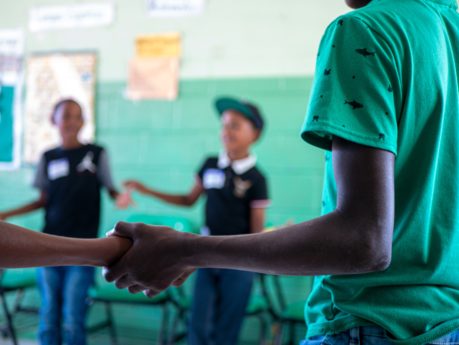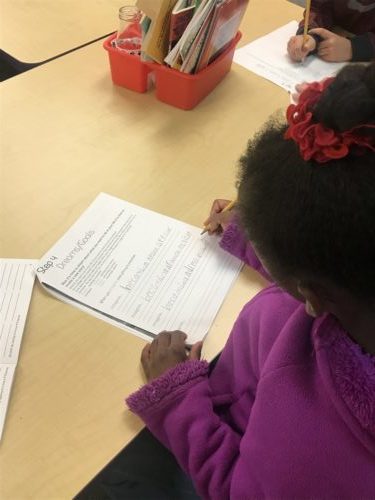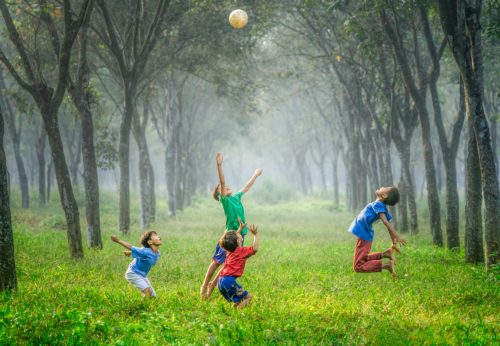 Every parent wants the best for their children. We work hard at making sure they eat right, do well in school, get enough sleep, etc. Another area that needs a great deal of focus is their emotional wellness. Emotional wellness means a child is able to express emotion, feel empathy and compassion, have health relationships, communicate freely, be responsible, accept help, have fun and feel joy, and be able to bounce back when they face adversity. Emotional wellness is key to being resilient in the face of any adversity. And since adversity is an integral part of life, we can’t really shield our children from it. Instead, we can promote emotional wellness and resilience by giving them tools to cope—lasting tools that can equip them to weather all the storms they encounter throughout their lives. Here are seven tips to help you help you help your child be their best self emotionally.
Every parent wants the best for their children. We work hard at making sure they eat right, do well in school, get enough sleep, etc. Another area that needs a great deal of focus is their emotional wellness. Emotional wellness means a child is able to express emotion, feel empathy and compassion, have health relationships, communicate freely, be responsible, accept help, have fun and feel joy, and be able to bounce back when they face adversity. Emotional wellness is key to being resilient in the face of any adversity. And since adversity is an integral part of life, we can’t really shield our children from it. Instead, we can promote emotional wellness and resilience by giving them tools to cope—lasting tools that can equip them to weather all the storms they encounter throughout their lives. Here are seven tips to help you help you help your child be their best self emotionally.
- Spend quality time with your children every day without any distractions, showing them they are important and teaching them about how to have healthy relationships.
- Ask your children about their day. “What was hard about your day and why? What was great and why? What are you grateful for in your day?”
- Praise your child’s effort when doing things like helping around the house, working on homework, participating in sports, getting along with others—versus praising on the end product. “I like how hard you worked/how you persisted!”
- If your child is resisting, acting out, or engaging in unwanted behaviors, before you react, take several slow, deep breaths to strengthen your ability to stay calm and then ask them what’s upsetting them. This strategy helps you get to the root of the issue and address the real problem so you can determine a real solution for correcting the behavior. “Can you tell me what just happened?” or “Tell me about your day” can open up a productive conversation and can even boost a child’s ability to self-correct.
- Ask your child “What do you need?” to accomplish what you are asking them to do. This question helps them to think about themselves and to understand their needs and personality better.
- Show them that you care about their feelings, their beliefs, their hopes and dreams—their identity. Avoid negative labels and judgments about who they are—for example, it’s okay to be quiet, smart, funny, cautious, timid, sensitive, boisterous, athletic, artistic, or assertive. A child’s personality may be different than you want or had hoped, but that’s ok. It’s good for your children to be true to themselves. See their strengths and their value, and validate them! You’ll boost your success with this if you practice being nonjudgmental and true to your own self, embracing your own quirks, and honoring your own strengths and value to the world. Of course there is always room for improvement, but know that you—and your child—are worthy, just the way you are!
- Teach them empathy and compassion. They will learn by watching you. Teaching them how to be compassionate, kind, and caring when someone is hurting or needy is important in the world today.
If you find any one of these tips difficult to implement and/or the dynamics between you and your child challenging more often than you’d like it to be, then you or your child (or both) might have some unresolved stress or trauma you haven’t worked through yet. Try using The Imagine Project journaling process to help process and heal those issues (its FREE). You can both write your Imagine stories, share them, and grow together—it will be an amazing experience for everyone! Download the journals now—you will love the way it strengthens your relationship and builds resilience as well as emotional wellness.
Thank you and Happy Imagining!
Dianne
The Imagine Project, Inc., a nonprofit organization that helps kids, teens, and adults overcome challenging life circumstances through expressive writing. Dianne is a thought leader in the area of stress and trauma in children. Her simple, yet profound 7-step writing tool, now used by schools across the US and internationally, gives kids and teens the opportunity to rewrite a challenging personal story and Imagine new possibilities in its place.

 The spirit of giving is all around us this time of year. Giving is the essence of life—taking care of our loved ones, friends, even strangers, gives us a sense of purpose and wellbeing—its just part of living in a community and being a good citizen. Making sure our children know the spirit of giving is so important in their understanding of themselves and others; it even helps lessen stress. While using
The spirit of giving is all around us this time of year. Giving is the essence of life—taking care of our loved ones, friends, even strangers, gives us a sense of purpose and wellbeing—its just part of living in a community and being a good citizen. Making sure our children know the spirit of giving is so important in their understanding of themselves and others; it even helps lessen stress. While using 
 As parents and teachers we often see our kids struggling with issues that challenge their ability to cope. It may be keeping up in school, coping with friendship changes, or the trials of social media. We are always looking for tools to support our precious children (and ourselves).
As parents and teachers we often see our kids struggling with issues that challenge their ability to cope. It may be keeping up in school, coping with friendship changes, or the trials of social media. We are always looking for tools to support our precious children (and ourselves). 
 A very important question all parents, teachers, counselors, youth leaders, etc. must always be asking is, “How do we teach our kids to be resilient?” Resilience is so important when trying to navigate and succeed in our complicated world. Research shows stress is growing with our younger generations. Social media, faster moving information, pressures from peers, parents, and education is intensifying quickly. Knowing how to teach our kids to cope with life and become resilient is critical to their ability to overcome stress and become resilient in their lives.
A very important question all parents, teachers, counselors, youth leaders, etc. must always be asking is, “How do we teach our kids to be resilient?” Resilience is so important when trying to navigate and succeed in our complicated world. Research shows stress is growing with our younger generations. Social media, faster moving information, pressures from peers, parents, and education is intensifying quickly. Knowing how to teach our kids to cope with life and become resilient is critical to their ability to overcome stress and become resilient in their lives. Laughter, running, jumping, being silly, twirling, smiling, creating—all are part of play and having fun! Instinctively, as parents and teachers, we know the importance of play for our kids (and ourselves)—it gives them/us a welcome break from stress and promotes mental health. Yet, we often put play last after homework, sports, jobs, and the constant daily routines of life. The American Academy of Pediatrics promotes play as essential to a child’s development because research shows that it improves learning, cognitive awareness, physical, social, and emotional wellbeing. Fortunately, play is making a comeback because we are remembering how critical it is to healthy brain and body development. Play gives kids tremendous learning opportunities, including how to work with others, manage feelings, think, plan, make decisions, and read other people’s emotions. Play also promotes physical fitness, creativity, self-expression, self-regulation, and healthy boundaries—basically physical and emotional wellness and mental health!
Laughter, running, jumping, being silly, twirling, smiling, creating—all are part of play and having fun! Instinctively, as parents and teachers, we know the importance of play for our kids (and ourselves)—it gives them/us a welcome break from stress and promotes mental health. Yet, we often put play last after homework, sports, jobs, and the constant daily routines of life. The American Academy of Pediatrics promotes play as essential to a child’s development because research shows that it improves learning, cognitive awareness, physical, social, and emotional wellbeing. Fortunately, play is making a comeback because we are remembering how critical it is to healthy brain and body development. Play gives kids tremendous learning opportunities, including how to work with others, manage feelings, think, plan, make decisions, and read other people’s emotions. Play also promotes physical fitness, creativity, self-expression, self-regulation, and healthy boundaries—basically physical and emotional wellness and mental health! With the holidays comes family, fun, and gifts! There’s no better time of year to each a child (and adults) the importance of gratitude beyond the “Thank you” that comes after receiving a gift. Daily gratitude is such a simple idea/process, yet most people overlook it’s amazing benefits. Dr. David Hamilton, author of Why Kindness is Good for You, writes, “Gratitude is a mark of being kind to life by being aware of all that is around us, and when we are grateful, we acknowledge the people and situations in our life and express thanks for them.” We teach our children to say “thank you,” but it’s also important to model and teach them to see gratitude as a key philosophy of life. Seeing and feeling gratitude every day is one key to being resilient and successful.
With the holidays comes family, fun, and gifts! There’s no better time of year to each a child (and adults) the importance of gratitude beyond the “Thank you” that comes after receiving a gift. Daily gratitude is such a simple idea/process, yet most people overlook it’s amazing benefits. Dr. David Hamilton, author of Why Kindness is Good for You, writes, “Gratitude is a mark of being kind to life by being aware of all that is around us, and when we are grateful, we acknowledge the people and situations in our life and express thanks for them.” We teach our children to say “thank you,” but it’s also important to model and teach them to see gratitude as a key philosophy of life. Seeing and feeling gratitude every day is one key to being resilient and successful. Tis that time of year again; teachers are trying not to think about going back to school—but, unfortunately, it’s creeping up on your horizon. There are mixed feelings about the up and coming new school year; excitement, dread, curiosity, doubt, hope, and worry are just a few. Where does a teacher begin when he or she is planning for their future 8-10 months with students? How about writing your Imagine Intentions for the school year?
Tis that time of year again; teachers are trying not to think about going back to school—but, unfortunately, it’s creeping up on your horizon. There are mixed feelings about the up and coming new school year; excitement, dread, curiosity, doubt, hope, and worry are just a few. Where does a teacher begin when he or she is planning for their future 8-10 months with students? How about writing your Imagine Intentions for the school year?